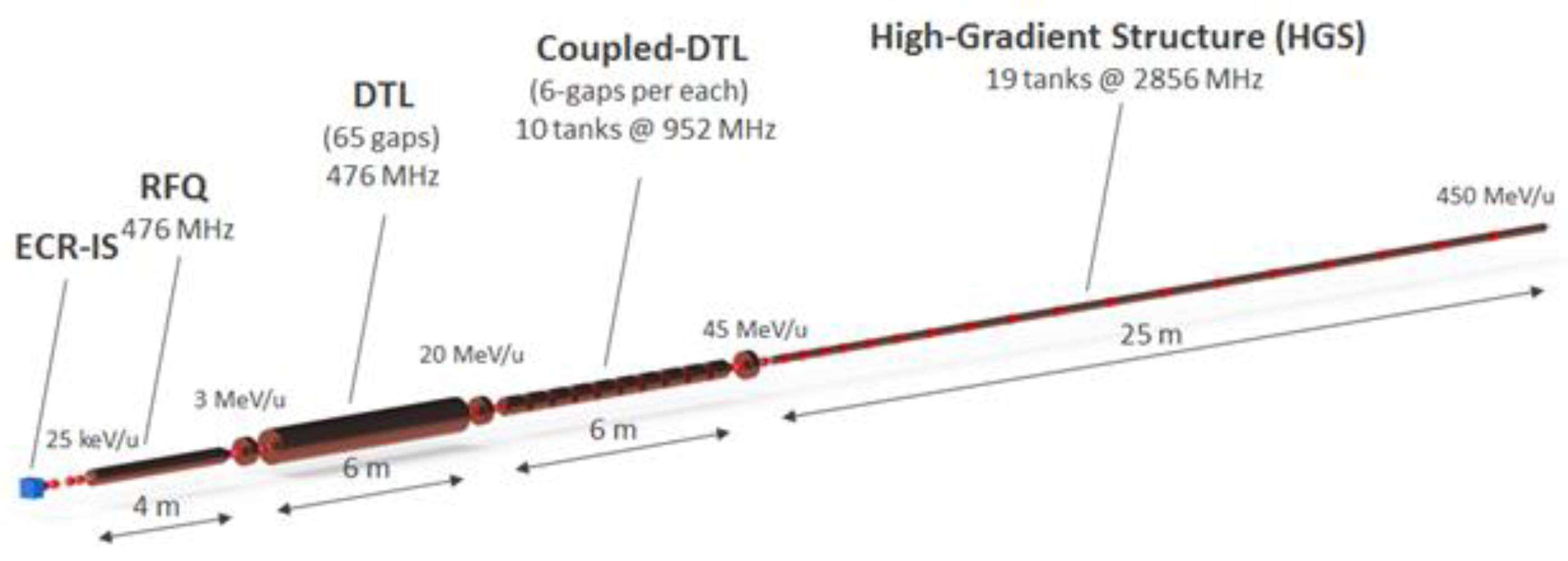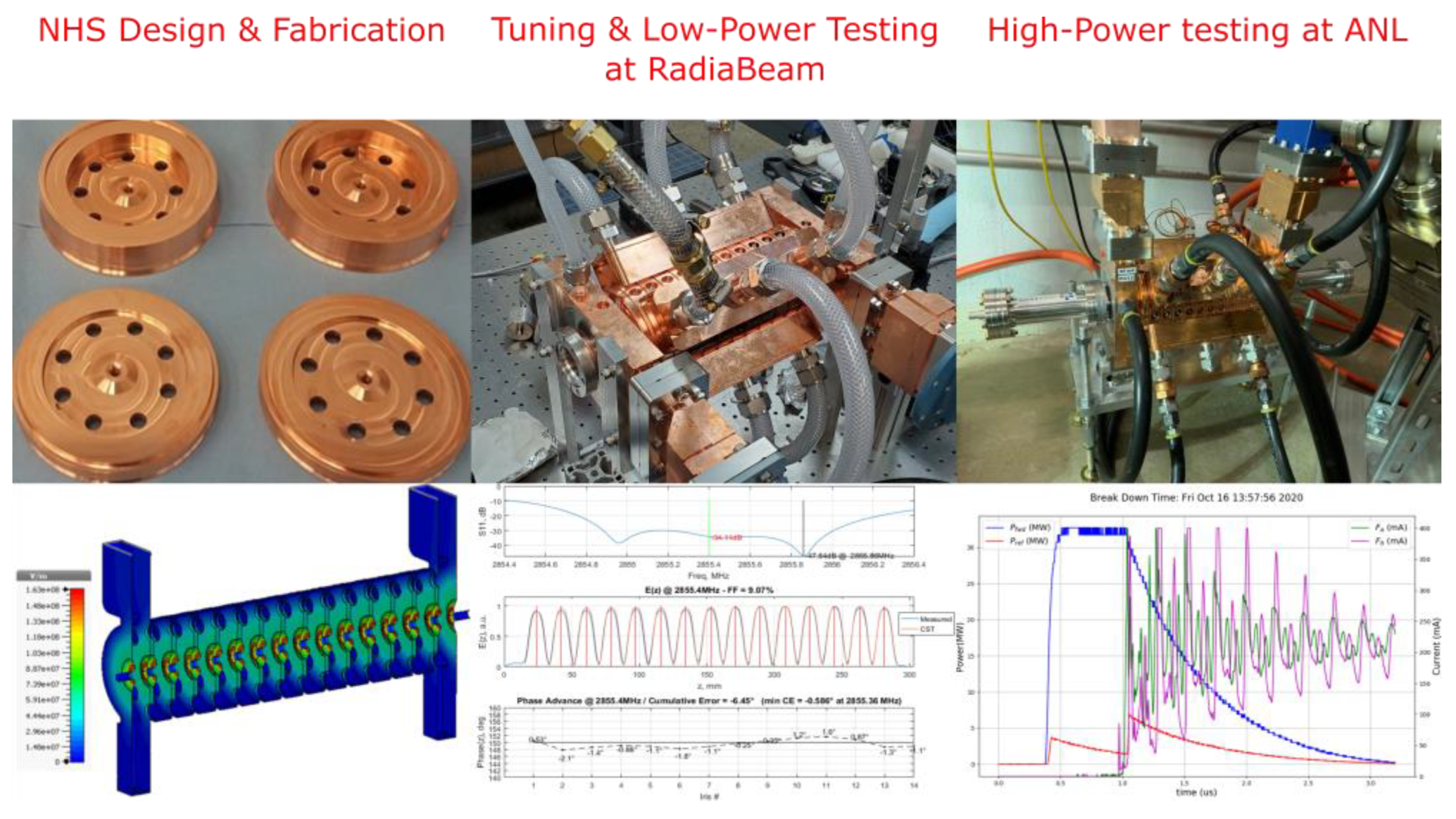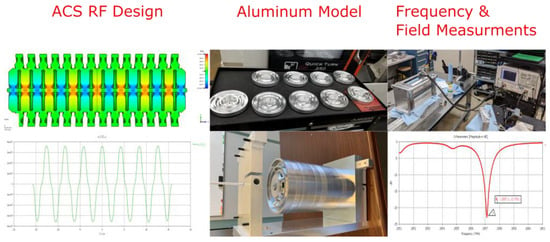You're using an outdated browser. Please upgrade to a modern browser for the best experience.

Submitted Successfully!
Thank you for your contribution! You can also upload a video entry or images related to this topic.
For video creation, please contact our Academic Video Service.
| Version | Summary | Created by | Modification | Content Size | Created at | Operation |
|---|---|---|---|---|---|---|
| 1 | Brahim Mustapha | -- | 1735 | 2023-05-22 18:35:29 | | | |
| 2 | Beatrix Zheng | -391 word(s) | 1344 | 2023-05-23 11:20:22 | | | | |
| 3 | Beatrix Zheng | Meta information modification | 1344 | 2023-05-23 11:21:08 | | | | |
| 4 | Beatrix Zheng | -3 word(s) | 1341 | 2023-05-24 08:27:23 | | |
Video Upload Options
We provide professional Academic Video Service to translate complex research into visually appealing presentations. Would you like to try it?
Cite
If you have any further questions, please contact Encyclopedia Editorial Office.
Schulte, R.; Johnstone, C.; Boucher, S.; Esarey, E.; Geddes, C.G.R.; Kravchenko, M.; Kutsaev, S.; Loo, B.W.; Méot, F.; Mustapha, B.; et al. High-Gradient Ion Linacs for FLASH-RT. Encyclopedia. Available online: https://encyclopedia.pub/entry/44679 (accessed on 21 December 2025).
Schulte R, Johnstone C, Boucher S, Esarey E, Geddes CGR, Kravchenko M, et al. High-Gradient Ion Linacs for FLASH-RT. Encyclopedia. Available at: https://encyclopedia.pub/entry/44679. Accessed December 21, 2025.
Schulte, Reinhard, Carol Johnstone, Salime Boucher, Eric Esarey, Cameron G. R. Geddes, Maksim Kravchenko, Sergey Kutsaev, Billy W. Loo, François Méot, Brahim Mustapha, et al. "High-Gradient Ion Linacs for FLASH-RT" Encyclopedia, https://encyclopedia.pub/entry/44679 (accessed December 21, 2025).
Schulte, R., Johnstone, C., Boucher, S., Esarey, E., Geddes, C.G.R., Kravchenko, M., Kutsaev, S., Loo, B.W., Méot, F., Mustapha, B., Nakamura, K., Nanni, E.A., Obst-Huebl, L., Sampayan, S.E., Schroeder, C.B., Sheng, K., Snijders, A.M., Snively, E., Tantawi, S.G., ...Van Tilborg, J. (2023, May 22). High-Gradient Ion Linacs for FLASH-RT. In Encyclopedia. https://encyclopedia.pub/entry/44679
Schulte, Reinhard, et al. "High-Gradient Ion Linacs for FLASH-RT." Encyclopedia. Web. 22 May, 2023.
Copy Citation
Synchrotrons are used for ion beam therapy, while cyclotrons are mainly used for proton therapy. Linacs were not seriously considered for ion beam therapy due to the required accelerator length and extended footprint. With the developments of high-frequency high-gradient accelerating copper structures, more compact linacs are being proposed for protons and ions. These structures should be capable of delivering FLASH beam intensities.
particle accelerators
FLASH effect
radiation therapy
1. Linacs for Ion Beam Therapy
Being a single-pass machine, a pulsed linear accelerator (linac) is capable of adjusting the pulse repetition rate and beam energy hundreds of times per second (~200 Hz). This much-desired flexibility in beam tuning enables fast and efficient beam scanning to allow 3D dose painting, as well as real-time image-guided range calculation and targeting of moving targets. By changing the pulse repetition rate, the beam intensity could be adjusted up to 109 ions per second (1010 for protons), typically needed for therapy. For carbon ions, the energy could be changed continuously up to the full energy of 430 MeV/u required to penetrate the depth of a human body, which is equivalent to 30 cm of water. In addition, the beam quality from a single-pass full-energy linac is generally better than other systems that may require energy degraders or multi-turn acceleration.
Linacs have already been proposed for proton [1] [2] and carbon beam therapy [3], but no full-energy linac-based facilities exist. This is due to the length and space required for the linac, which has limited its deployment in a hospital or other clinical setting. Using traditional accelerator technology, a linac would be hundreds of meters long, and this is the main reason why synchrotrons are currently dominating the field of ion beam therapy. The beam delivery from a linac will be similar to synchrotron beam delivery through fixed beamlines or gantry systems. However, the superior beam quality of the linac enables much smaller magnets and, therefore, more compact gantries.
2. The ACCIL Ion Linac: General and FLASH Capabilities
The advanced compact carbon ion linac (ACCIL) is the most compact full-energy carbon ion linac proposed for therapy [4]. In Europe, there are proposals for a combined cyclotron and linac (cyclinac) and an all-linac for carbon beams [3], in addition to the ongoing LIGHT project for a proton therapy linac [5]. ACCIL is designed to deliver a full energy of 450 MeV/u, which exceeds the maximum energy required for carbon ion therapy. It is also capable of accelerating protons and many other ion beams to the same energy per nucleon. Figure 1 presents a schematic layout of the ACCIL design. The system is about 45 m long but could, in principle, be folded into two 25 m-long sections.

Figure 1. Layout of the proposed ACCIL design.
The linac comprises an electron cyclotron resonance ion source, followed by a radio-frequency quadrupole accelerating the carbon beam to 3 MeV/u, which is further accelerated in a drift tube linac (DTL), then in a coupled DTL linac up to 45 MeV/u. The essential features to achieve compactness in the ACCIL design are high-gradient structures, each capable of delivering 50 MV/m, that accelerate the beam to the full energy of 450 MeV/u in ~25 m.
The main advantages of ACCIL are the fast pulse-to-pulse beam energy change and ion beam switching capabilities. Different ion sources could be used in the front end to allow fast beam switching between different ion species. The delivered beam intensity could also be controlled by adjusting the pulse length at the source or changing the pulse repetition rate, typically from 100 to 400 Hz, and R&D for accelerating structures capable of operating at 1000 Hz is ongoing. Ultimately, the tuning flexibility of the ACCIL design will allow fast and effective variable-energy and intensity-modulated multi-ion beam therapy.
ACCIL is capable of accelerating a variety of ion beams from proton to neon, up to a maximum energy of 450 MeV/u. At this energy, ions lighter than carbon, including protons and helium ions, have ranges exceeding the depth of the human body and could therefore be used for imaging such as proton/ion tomography. It is also possible to deliver these beams with lower energies for treatment. Despite having ranges shorter than the human body, ions heavier than carbon, such as oxygen and neon, could still be used for treatment at adjustable energies up to the full linac energy.
As for FLASH, ACCIL’s capability is comparable to other existing proton and ion machines [6]. For example, for a proton beam of 230 MeV, losing about half of its energy in the last 10 cm, the energy deposited at 1010 protons/s is ~0.16 J/s. The corresponding dose delivered to a spot size of ~5 × 5 mm2 (2.5 cm3 beam-stopping volume) is ~ 60 Gy/s, which is well above the FLASH dose requirement of 40 Gy/s. For a carbon ion beam of 430 MeV/u, losing about half of its energy in the last 10 cm, the energy deposited at 109 carbon ions/s is ~0.38 J/s, and the corresponding dose delivered to the same stopping volume is ~ 150 Gy/s, which exceeds the FLASH dose requirement and calls for a larger beam spot size. However, to satisfy all cases, for all tumor sizes and beam energies, the researchers would need at least 10 times more particles per second (1011 protons/s and 1010 carbon ions/s), which is feasible with the ACCIL linac design. In addition, higher repetition rates may be required for faster beam scanning and more flexibility in beam delivery.
3. Enabling Technology: Low-Velocity High-Gradient Accelerating Structure Development
ACCIL requires the development of high-gradient structures (~50 MV/m) for ion acceleration with a relative velocity β in the 0.3–0.8 range. This makes the accelerating cells much more compact than β~1 cells built for electrons, especially at the lowest β. A shorter and more compact cell increases the rate of electric breakdowns and makes dissipating the power required for operation at such high gradients challenging. R&D in this field is being pursued at CERN [7], other European institutions, and, more recently, in the US by RadiaBeam and Argonne [8]. In this collaboration, the researchers have developed a β ~0.3 traveling-wave S-band structure (NHS) and demonstrated the 50 MV/m accelerating gradient required for ACCIL [9]; see Figure 2.

Figure 2. Design, fabrication, and high-power testing of the negative-harmonic traveling-wave structure (NHS) developed by RadiaBeam in collaboration with Argonne.
This special cavity design for the lowest velocity ions is what distinguishes ACCIL and makes it more compact than other linacs. It allows the transition to high-gradient acceleration to take place at 45 MeV/u, which is much lower than the 70 MeV/u for other linacs. At Argonne, the researchers have also designed and prototyped a cold model of a β ~0.4 annular coupled structure (ACS) [10] as the next accelerating cavity for ACCIL following the NHS; see Figure 3.

Figure 3. Design, cold model, and measurements of the annular-coupled structure (ACS) developed by Argonne in collaboration with RadiaBeam.
4. Future Developments for FLASH-RT
In addition to the general development of high-gradient accelerator structures for low-velocity ions, the researchers identify a few areas of R&D of special importance for FLASH-RT [11] with ion beams:
-
Investigating and pushing the beam current limit of compact ion linacs;
-
Increasing the repetition rate of high-gradient structures;
-
Developing RF sources capable of delivering the required high pulsed power.
More importantly, and to enable this technology, establishing a linac-based advanced ion therapy research center in one of the National Labs would be a significant step forward and would allow the following:
-
Cancer therapy and radiobiology research with all ion beams up to neon;
-
Radiography and tomography with ions lighter than carbon: proton, helium, etc.;
-
Real-time MRI guidance during beam delivery, significantly enhancing the outcome of ion beam therapy;
-
PET imaging using positron emitters (C-11, N-13, O-15, etc.) produced in the tumor for dose verification;
-
FLASH ion therapy (FLASH IT) and other novel approaches.
We mention, in particular, an ACCIL-type linac that could be installed at the existing IPNS site at Argonne National Lab with the required infrastructure [12], which represents a significant cost saving compared to a greenfield installation. Following the development and commissioning phases, an initial research program including cellular radiobiology and animal therapy could be conducted prior to human therapy and early clinical trials to prepare for FDA approval.
References
- Hamm, R.W.; Crandall, K.R.; Potter, J.M. Preliminary Design of a Dedicated Proton Therapy Linac. In Proceedings of the Conference Record of the 1991 IEEE Particle Accelerator Conference, San Francisco, CA, USA, 6–9 May 1991; Volume 4, pp. 2583–2585.
- Lu, X.; Li, Z.; Dolgashev, V.; Bowden, G.; Sy, A.; Tantawi, S.; Nanni, E.A. A proton beam energy modulator for rapid proton therapy. Rev. Sci. Instruments 2021, 92, 024705.
- Degiovanni, A.; Amaldi, U. Proton and Carbon Linacs for Hadron Therapy. In Proceedings of the 27th Linear Accelerator Conference, Geneva, Switzerland, 31 August–5 September 2014; p. 6.
- Ostroumov, P.N.; Goel, A.; Mustapha, B.; Nassiri, A.; Plastun, A.S. Compact Carbon Ion Linac. In Proceedings of the 2016 North American Particle Accelerator Conference, Chicago, IL, USA, 14 October 2016; p. 3.
- Ungaro, D.; Degiovanni, A.; Stabile, P.; Sa, A. LIGHT: A Linear Accelerator for Proton Therapy. In Proceedings of the 2016 North American Particle Accelerator Conference, Chicago, IL, USA, 9–14 October 2016; p. 5.
- Jolly, S.; Owen, H.; Schippers, M.; Welsch, C. Technical challenges for FLASH proton therapy. Phys. Medica Eur. J. Med. Phys. 2020, 78, 71–82.
- Benedetti, S.; Degiovanni, A.; Grudiev, A.; Wuensch, W.; Amaldi, U. RF design of a novel s-band backward travelling wave linac for proton therapy. In Proceedings of the 27th Linear Accelerator Conference, Geneva, Switzerland, 31 August–5 September 2014; p. 3.
- Kutsaev, S.V.; Agustsson, R.; Boucher, S.; Fischer, R.; Murokh, A.; Mustapha, B.; Nassiri, A.; Ostroumov, P.N.; Plastun, A.; Savin, E.; et al. High-gradient low- β accelerating structure using the first negative spatial harmonic of the fundamental mode. Phys. Rev. Accel. Beams 2017, 20, 120401.
- Kutsaev, S.V.; Agustsson, R.; Boucher, S.; Chimalpopoca, O.; Meyer, D.; Murokh, A.; Mustapha, B.; Nassiri, A.; Smirnov, A.Y.; Smith, T.; et al. Test Results of a High-Gradient 2.856-GHz Negative Harmonic Accelerating Waveguide. IEEE Microw. Wirel. Components Lett. 2021, 31, 1098–1101.
- Mustapha, B.; Abogoda, A.; Barcikowski, A.; Fischer, R.; Nassiri, A. Design of a High-Gradient S-Band Annular Coupled Structure. In Proceedings of the 3rd North American Particle Accelerator Conference (NAPAC2019), Lansing, MI, USA, 2–6 September 2019; p. WEPLM72.
- Matsuura, T.; Egashira, Y.; Nishio, T.; Matsumoto, Y.; Wada, M.; Koike, S.; Furusawa, Y.; Kohno, R.; Nishioka, S.; Kameoka, S.; et al. Apparent absence of a proton beam dose rate effect and possible differences in RBE between Bragg peak and plateau. Med. Phys. 2010, 37, 5376–5381.
- Mustapha, B.; Aydogan, B.; Nolen, J.; Nassiri, A.; Noonan, J.; Pankuch, M.; Welsh, J.; Schulte, R.; Robb, J. Prospects for an advanced heavy ion therapy center in the Chicago area. AIP Conf. Proc. 2019, 2160, 050009.
More
Information
Subjects:
Physics, Applied
Contributors
MDPI registered users' name will be linked to their SciProfiles pages. To register with us, please refer to https://encyclopedia.pub/register
:
View Times:
685
Revisions:
4 times
(View History)
Update Date:
24 May 2023
Notice
You are not a member of the advisory board for this topic. If you want to update advisory board member profile, please contact office@encyclopedia.pub.
OK
Confirm
Only members of the Encyclopedia advisory board for this topic are allowed to note entries. Would you like to become an advisory board member of the Encyclopedia?
Yes
No
${ textCharacter }/${ maxCharacter }
Submit
Cancel
Back
Comments
${ item }
|
More
No more~
There is no comment~
${ textCharacter }/${ maxCharacter }
Submit
Cancel
${ selectedItem.replyTextCharacter }/${ selectedItem.replyMaxCharacter }
Submit
Cancel
Confirm
Are you sure to Delete?
Yes
No




